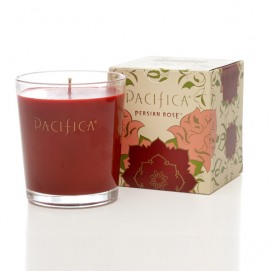Going back to the history of perfume, the reason perfume and good scents are so important is because they have their own effects on the human body. For the most part, scents are associated with moods, emotions, and past experiences and while they inspire different feelings within each person, the fact that they can create physical reactions and increase the body's ability to heal, relax, or become energized (according to the scent) shows the power of the subtle plane.
Experiments have shown that just the thought of a scent influences physical reactions:
"In one experiment, researchers found that just telling subjects that a pleasant or unpleasant odour was being administered, which they might not be able to smell, altered their self-reports of mood and well-being. The mere mention of a positive odour reduced reports of symptoms related to poor health and increased reports of positive mood!" (http://www.sirc.org/publik/smell_emotion.html) Pleasant fragrances are found to have a positive effect on overall mood and bring a sense of well-being. It is also interesting to note that these sweet fragrances can also effect our perception of beauty:
"The positive emotional effects of pleasant fragrances also affect our perceptions of other people. In experiments, subjects exposed to pleasant fragrances tend to give higher ‘attractiveness ratings’ to people in photographs...if the person is just ‘average’, a pleasant fragrance will tip the balance of our evaluation in his or her favour...Beauty is in the nose of the beholder" (
http://www.sirc.org/publik/smell_emotion.html).
So for those of you reading
Karina's blog, (which I invite you to do) smelling good is part of your romantic connection and can also help balance emotional, mental, and physical disparities. There are also many benefits that can be applied cosmetically.
Although it depends on the person, here are a few scents and their aromatherapeutic, and healing effects. The following information was shared by one of Lavaculture's favorite sites:
Rose-
"There are many different types of roses. They all have some differences in healing properties. Rose is known for its soothing and calming abilities. Damask rose oil soothes and harmonizes the mind and helps with depression, anger, grief, fear, nervous tension and stress and at the same time addresses sexuality, self-nurturing, self esteem and dealing with emotional problems."
Bergamont-
"When you are looking for an oil to help with depression, SAD (Seasonal Affected Disorder) or generally feeling just a bit off, lacking in self-confidence or feeling shy, then consider bergamot oil."
Jasmine-
"It is a valuable remedy in cases of severe depression and soothes the nerves, producing a feeling of confidence, optimism and euphoria, while revitalizing and restoring energy. Jasmine oil facilitates delivery in childbirth: it hastens the birth by strengthening the contractions and at the same time relieves pain. It is effective in post-natal depression and promotes the flow of breast milk. Because of its deeply soothing and calming nature, jasmine oil helps with sexual problems such as impotence, premature ejaculation and frigidity."
Vetivere-
"Vetiver oil calms and soothes the mind and helps to dispel anger, hysteria and irritability and neurotic behavior can also be reduced, as stress and tension is reduced. It revitalizes the body and helps with mental and physical exhaustion and is also used for general aches and pains, especially for rheumatism, arthritis and muscular pain, while relieving insomnia."
Ylang Ylang-
"Ylang-ylang oil has a euphoric and sedative effect on the nervous system and helps with anxiety, tension, shock, fear and panic while the aphrodisiac qualities is useful for impotence and frigidity. Ylang-ylang oil assist with problems such as high blood pressure, rapid breathing and heartbeat, nervous conditions, as well as impotence and frigidity."
Lavender-
"Lavender oil has a soothing and calming effect on the nerves, relieving tension, depression, panic, hysteria and nervous exhaustion in general and is effective for headaches, migraines and insomnia."
Mandarin-
"Tangerine oil is soothing to the nervous system and has a tonic effect on the digestive system, while helping flatulence, diarrhea and constipation. It is also useful for the skin and is used to help with stretch marks, increasing circulation and reducing fluid retention."
Palma Rosa-
"Palmarosa oil calms the mind, yet has an uplifting effect, while clearing muddled thinking. It is used to counter physical and nervous exhaustion, stress-related problems and nervousness. Palmarosa oil moisturizes the skin, while balancing the hydration levels and stimulating cell regeneration. It balances production of sebum, to keep the skin supple and elastic and is valuable for use with acne, dermatitis, preventing scarring, rejuvenating and regenerating the skin, as well as fighting minor skin infections, sore tired feet and athlete's foot."
Rose Geranium-
"Rose geranium oil has a balancing effect on the nervous system and relieves depression and anxiety, while lifting the spirits and making the world an easier place to live in. It has a balancing effect on the adrenal cortex and is great for relieving stress."
Cinnamon-
"The therapeutic properties of cinnamon oil are analgesic, antiseptic, antibiotic, antispasmodic, aphrodisiac, astringent, cardiac, carminative, emmenagogue, insecticide, stimulant, stomachic, tonic and vermifuge."
Ginger-
"Ginger oil is used in the treatment of fractures, rheumatism, arthritis, bruising, carbuncles, nausea, hangovers, travel and sea sickness, colds and flu, catarrh, congestion, coughs, sinusitis, sores on the skin, sore throat, diarrhea, colic, cramps, chills and fever. Its warming qualities are good to use for feelings of loneliness and winter depression, and its energizing properties make it a good aphrodisiac."
Vanilla-
"Aromatherapy benefits of vanilla include heightened mental clarity, increased circulation, decreased fever temperatures, clearing respiratory airways and as a weight-loss aid. Medicinal benefits of the vanilla also have been thought to calm stomach pains, reduce hunger pangs and relieve stress. Europeans believed in vanilla's abilities to ease joint pain and aid in digestion. Natives to the South Pacific islands used vanilla to calm the stomachs of pregnant women with severe morning sickness. More modern research has claimed that vanilla can cure male impotency."
The information for Vanilla was shared by the following site:
Aromatherapy Benefits of Vanilla







































